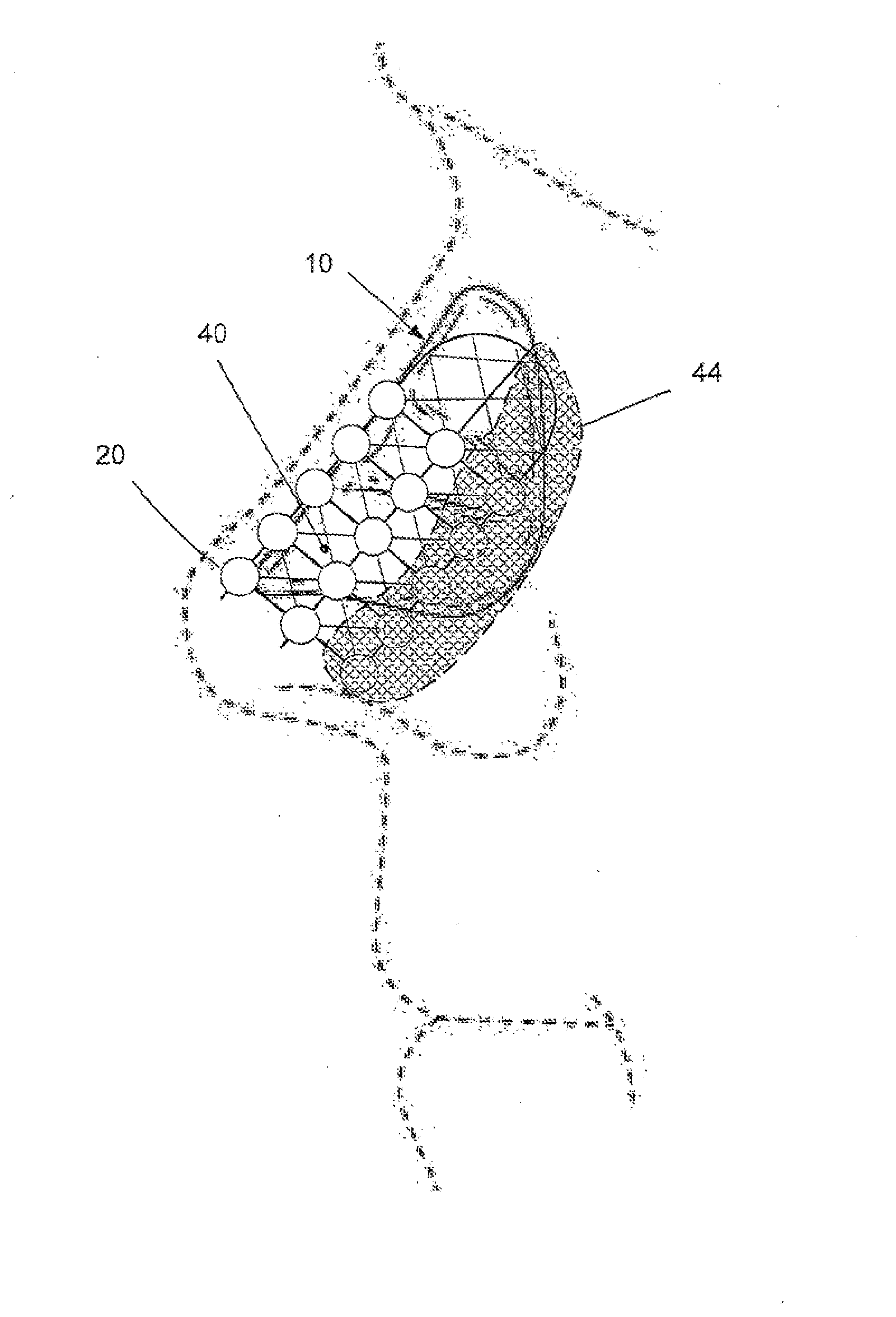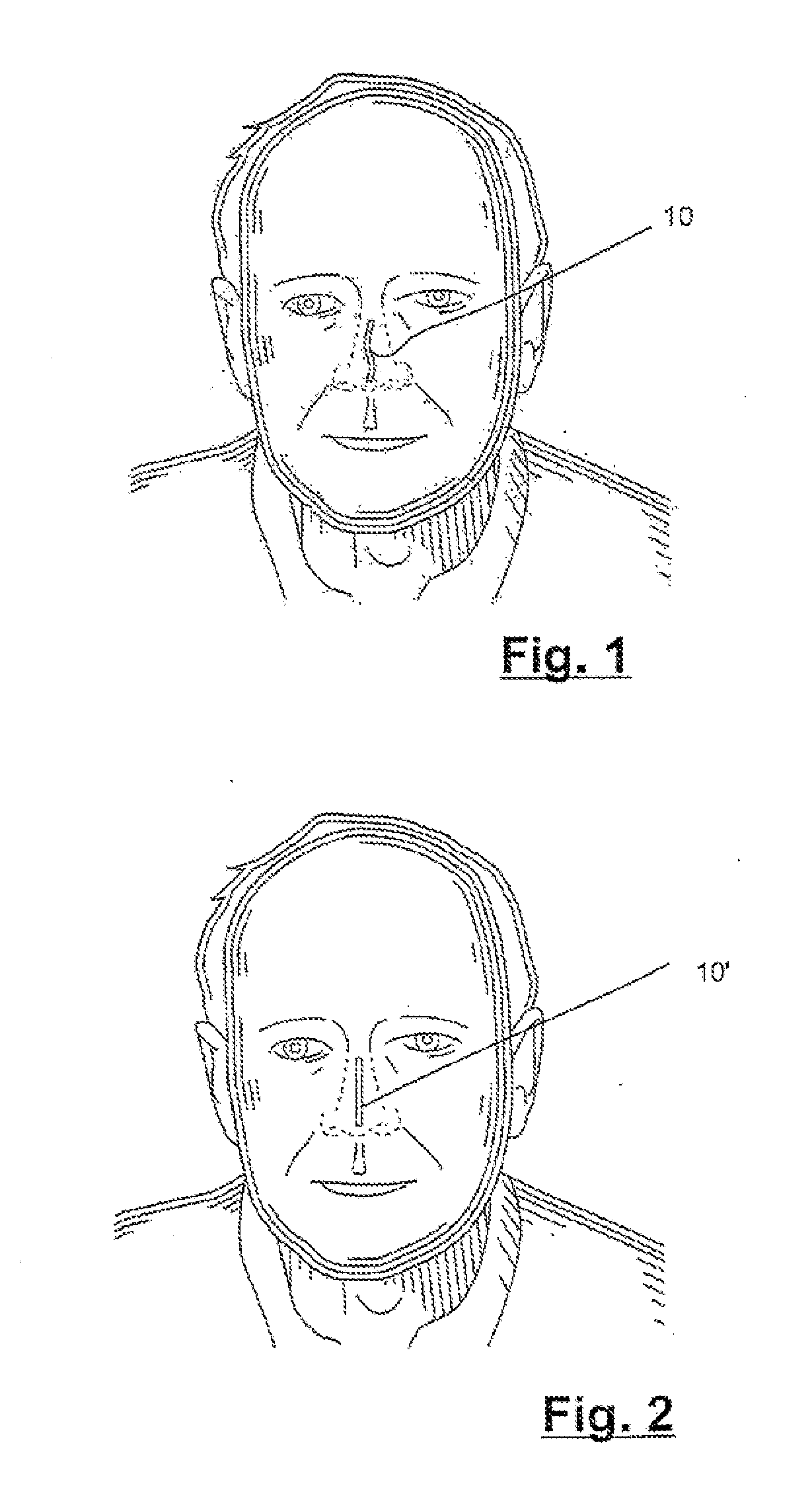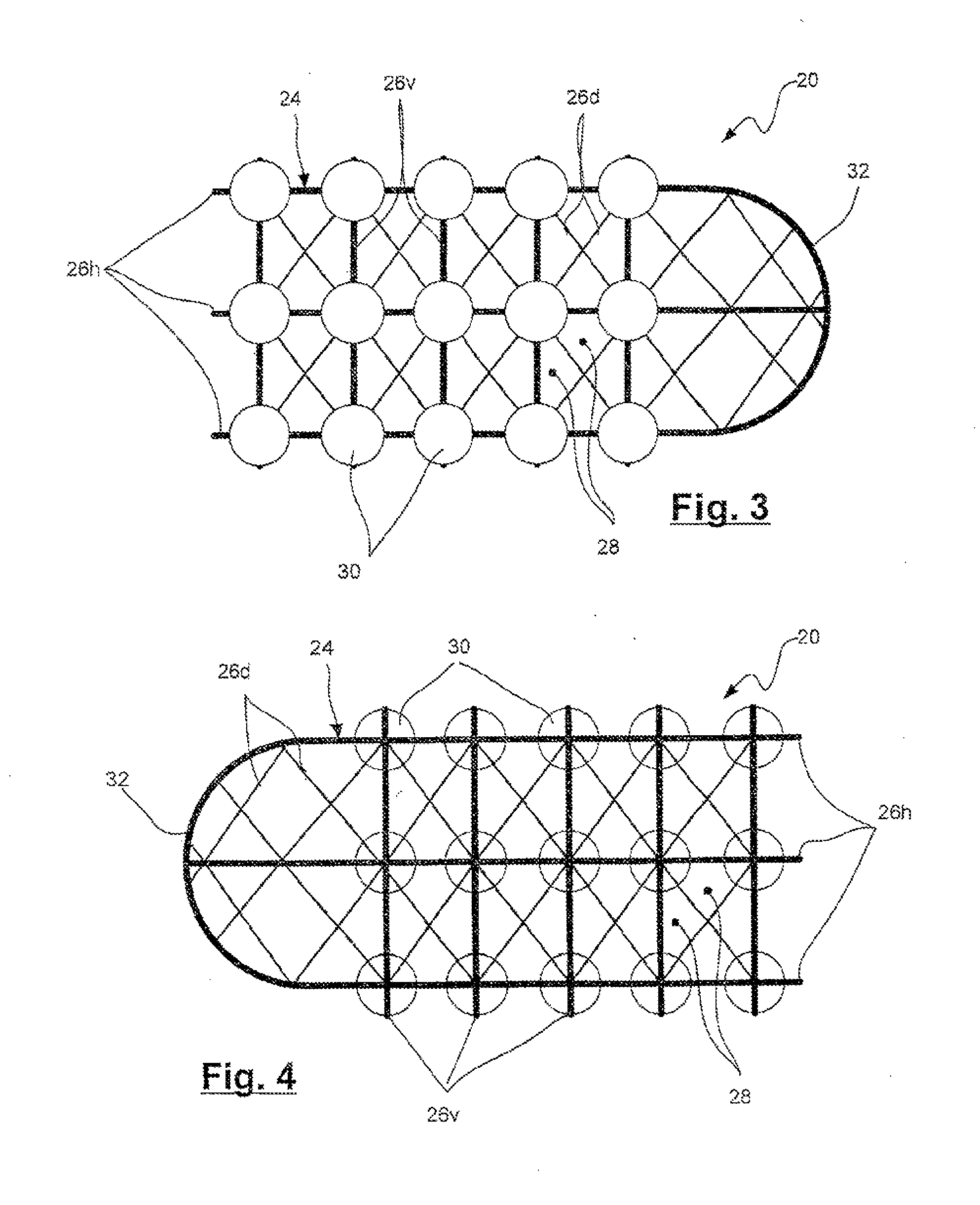Internally implantable nasal stent
a technology of stents and implants, which is applied in the field of surgical aids, can solve the problems of not being able to use on both sides, limiting the range of surgical techniques, and unable to meet the needs of patients, so as to reduce the degree of invasiveness of surgery and avoid potential complications
- Summary
- Abstract
- Description
- Claims
- Application Information
AI Technical Summary
Benefits of technology
Problems solved by technology
Method used
Image
Examples
Embodiment Construction
[0025]FIG. 2 shows a patient with a deviated septum 10. FIG. 1 shows the desired end result of the septoplasty—a healed straight septum 10′. It Is generally preferable to carry out the septoplasty corporeally In such a manner that the patient bears no visible facial scars, or where scarring is limited to the base of the nose.
[0026]FIG. 3 shows an absorbable and implantable nasal stent 20. Its purpose is to create a straight septum, and more particularly straight septal cartilage. The septal cartilage is typically situated at the narrowest part of the nasal cavity and is responsible for the majority of resistance to airflow, so any curvature, crookedness or other nonlinearity of the septal cartilage can be problematic and effect a patient's breathing. Of course, the stent 20 can be applied to other parts of the septum such as the bony septum.
[0027]The stent 20 accomplishes its task by causing the bent or nonlinear areas of the septum to become straight in two different ways. First, t...
PUM
 Login to View More
Login to View More Abstract
Description
Claims
Application Information
 Login to View More
Login to View More - R&D
- Intellectual Property
- Life Sciences
- Materials
- Tech Scout
- Unparalleled Data Quality
- Higher Quality Content
- 60% Fewer Hallucinations
Browse by: Latest US Patents, China's latest patents, Technical Efficacy Thesaurus, Application Domain, Technology Topic, Popular Technical Reports.
© 2025 PatSnap. All rights reserved.Legal|Privacy policy|Modern Slavery Act Transparency Statement|Sitemap|About US| Contact US: help@patsnap.com



